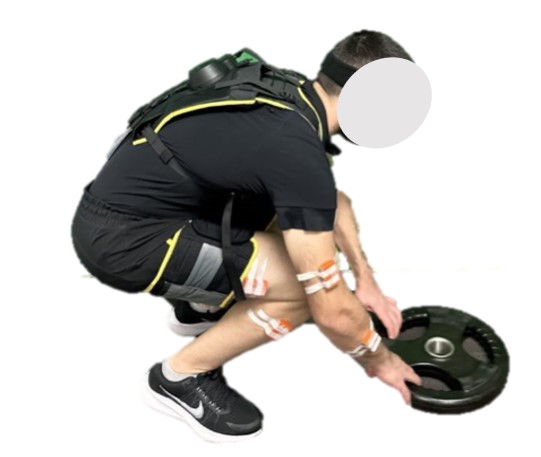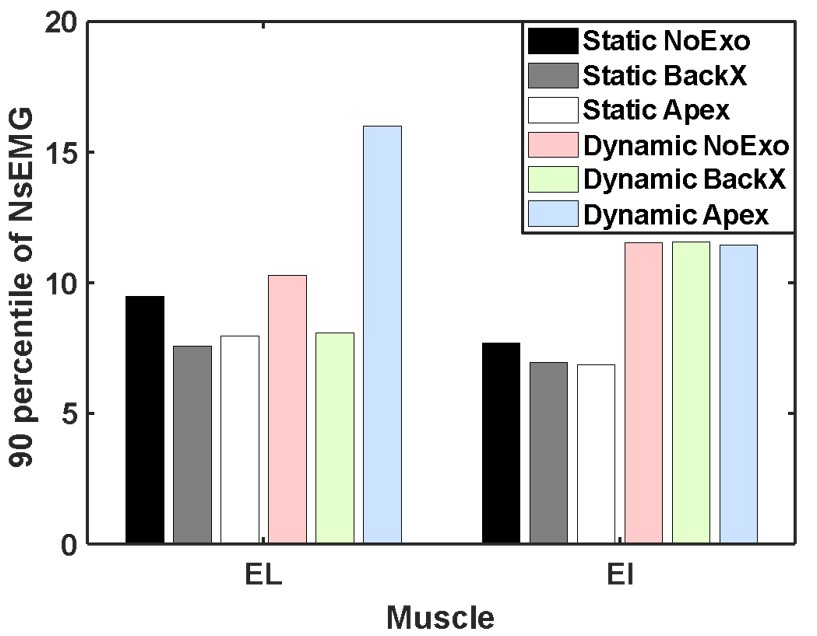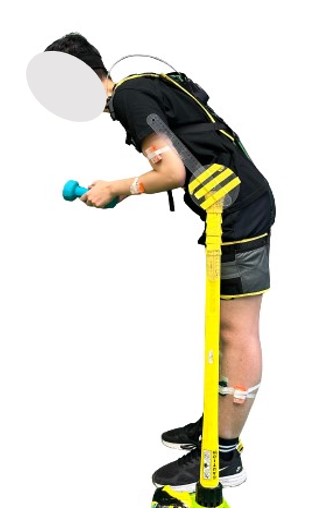
Passive Industrial Exoskeleton Assessment
Authors
Niromand Jasimi Zindashti, Negar Riahi, Armin Bonakdar, Ali Golabchi, Mahdi Tavakoli, Hossein Rouhani
Abstract
Work-related Musculoskeletal Disorders (WMSDs) are the most common increasing cause of work-related disabilities [1]. Exoskeletons, wearable devices that augment the wearer’s physical capabilities, are recommended to address the high rates of WMSDs. This study aims to evaluate the effects of two passive back-support exoskeletons (BackX and Apex) on muscle activity in static and dynamic tasks.
Methods
Four participants (two females and two males; age: 25.5±0.3) were enlisted. Electromyography (EMG) sensors (Tringo Avanti EMG sensor, Delsys, USA) were symmetrically positioned on erector spinae muscles (Longissimus (EL) and Iliocostalis (EI)). A 40° angle posture was chosen for the upper body during the static test corresponding to a welding task. Participants held a 5 lb weight for five repetitions, each lasting 1 minute (40 s test, 20 s rest). For the dynamic test simulating manhole cover replacement, a 25 lb weight was moved for ten repetitions. Both exoskeleton-assisted and unassisted scenarios were included for both test conditions. The mean and 90th percentile [2] of normalized muscle activity (NsEMG%) were computed for each muscle.
Results and Conclusion
Due to the small sample size, no statistical analysis was performed at this stage. Results were interpreted based on observed trends. The results show that exoskeletons reduce both the mean and 90th percentile of NsEMG in back muscles (EL and EI) by 0.34% and 0.25%, respectively, particularly in static test. When comparing the two exoskeletons, BackX tended to be more efficient than Apex, particularly during dynamic tasks. Gender-based distinctions between males and females were not observable. The outcomes demonstrates the potential of exoskeletons in alleviating back muscle activities and thus subsequent fatigue and WMSDs. Nevertheless, it is essential to acknowledge that exoskeletons' effectiveness is task-dependent, necessitating careful consideration and investigation when deploying them for industrial applications.
References
[1] Melhorn, J.M., 1998. Cumulative trauma disorders and repetitive strain injuries the future. Clinical Orthopaedics and Related Research®, 351, pp.107-126.
[2] Thamsuwan, O., Milosavljevic, S., Srinivasan, D. and Trask, C., 2020. Potential exoskeleton uses for reducing low back muscular activity during farm tasks. American Journal of Industrial Medicine, 63(11), pp.1017-1028.





